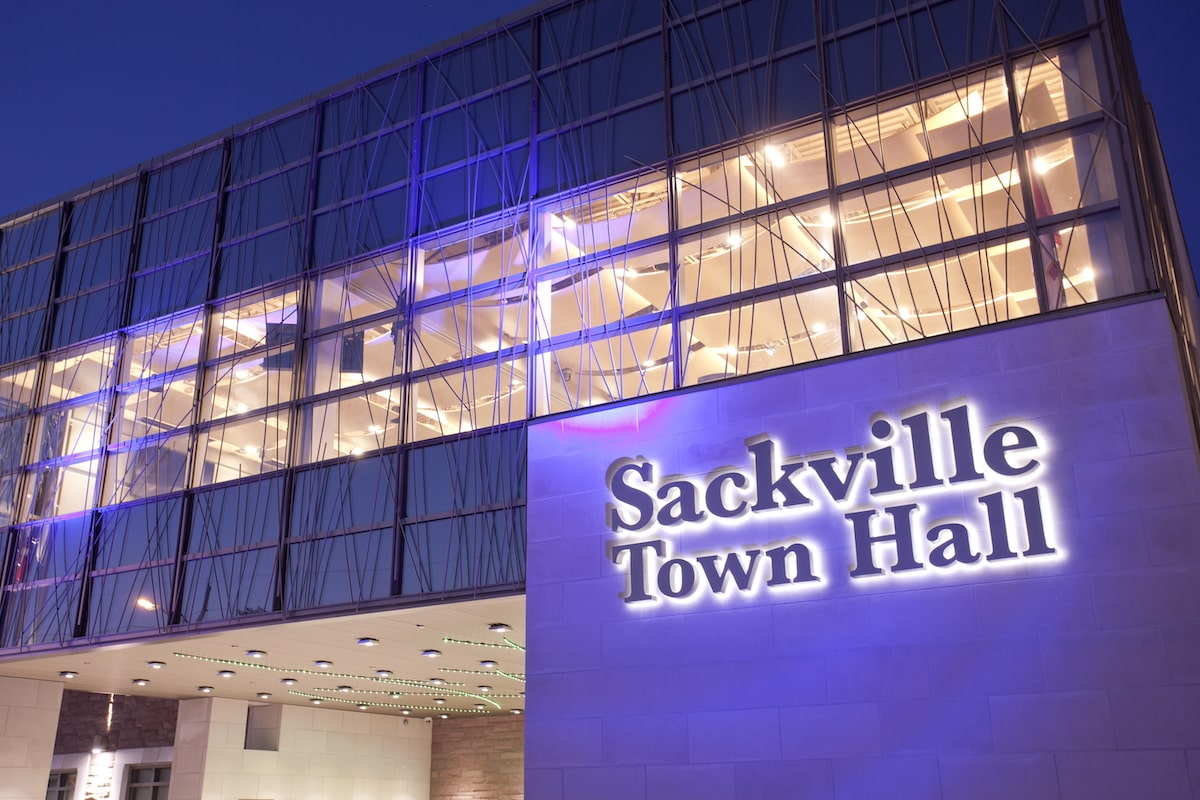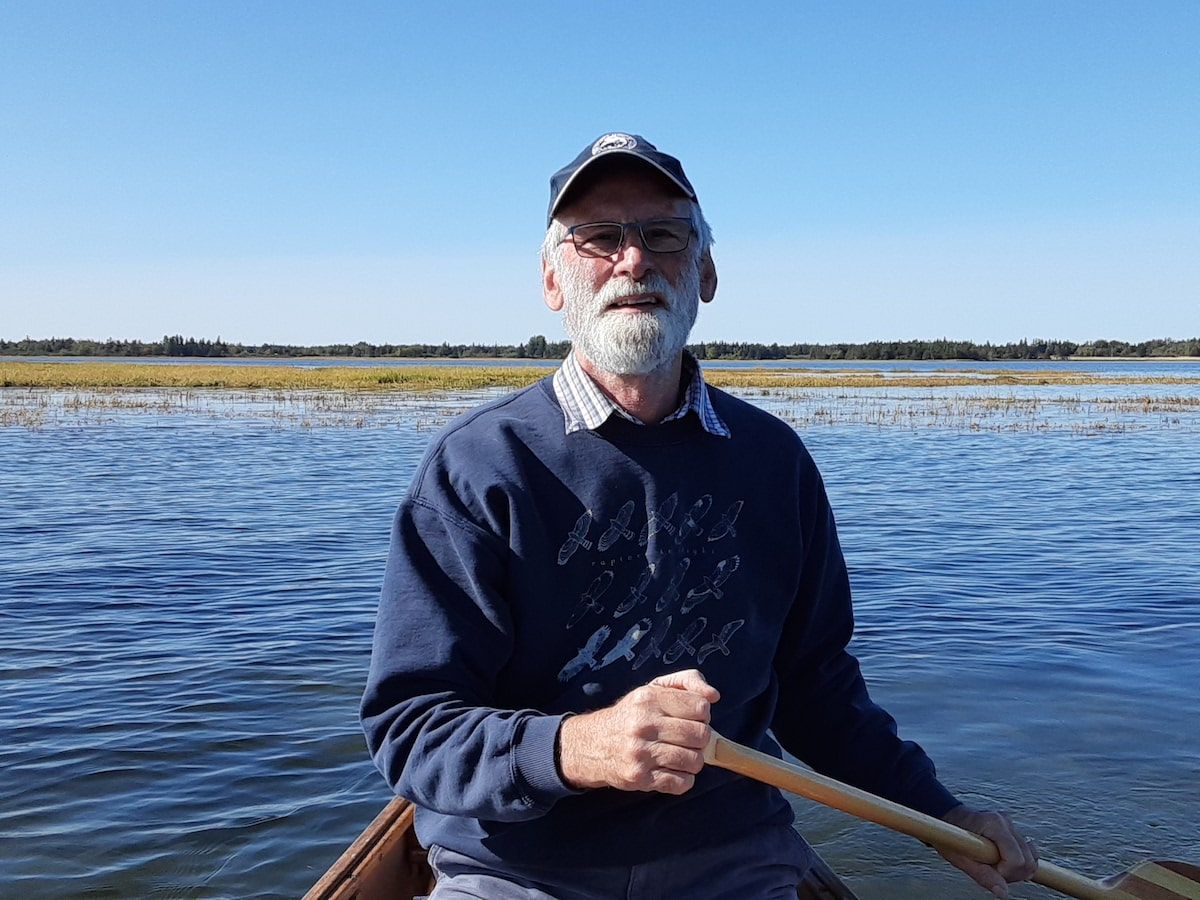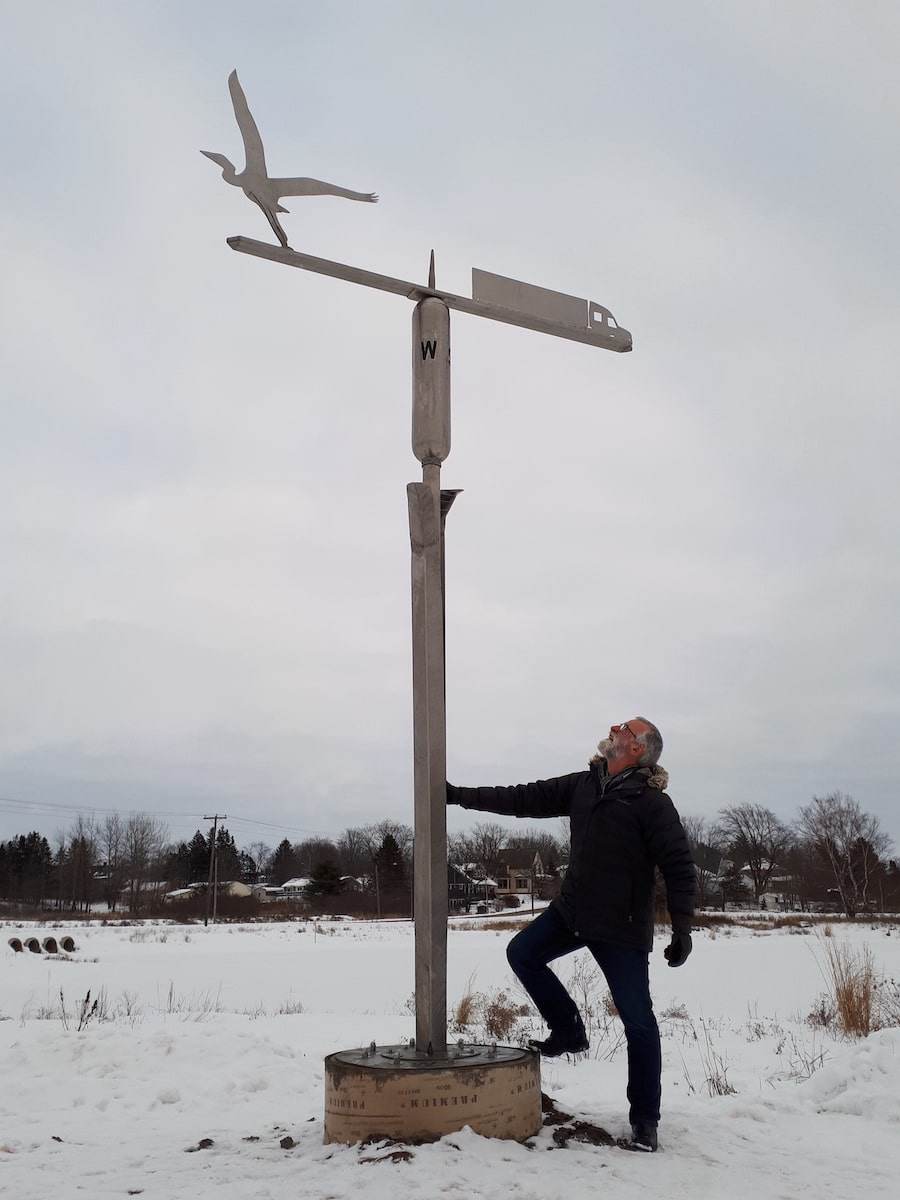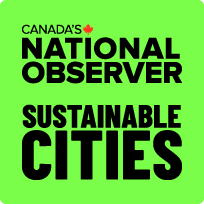- Residents of Sackville, N.B., demanded a voice in their community's climate conversation — and the town listened. Now, a group of concerned citizens and experts is helping to steer the municipality toward a sustainable future.
- The Mayor’s Roundtable on Climate Change examines all municipal decisions through a “climate lens” to minimize their environmental impacts.
- Citizens can pitch climate-focused ideas to town council through the roundtable, including renewable energy projects, climate education for elected officials and more.
In the spring and fall of 2019, the streets of Sackville, N.B., were inundated with hundreds of students skipping school, channelling their collective delinquency into a march and a message. Young people, ranging from elementary school to university age, were sending the message that Sackville wasn’t doing enough to address climate change. The town leaders agreed.
Sackville’s mayor at the time, John Higham, met with march organizers and, after considering their suggestions for climate action, pursued one of the more innovative ideas. That year, he established the Mayor’s Roundtable on Climate Change, a body of citizens and experts to advise the town council on all things climate and actively steer Sackville — population 5,331 — to a sustainable future.

New Brunswick reached its 2020 climate target two years early. It's now aiming for its 2030 emissions goal of 10.7 Mt CO2e.

Even before the new initiative, the town was making strides on its climate goals. A decade ago, Sackville committed to cutting greenhouse gas emissions by 10 per cent from 2011 levels by 2021. The town surpassed its target in 2018, lowering emissions in its residential, commercial and transportation sectors by an estimated 28 per cent. The province, too, has made good on its climate commitments: New Brunswick reached its 2020 target two years early, slashing emissions by 34 per cent below 2005 levels as of 2018. The province emitted 12.4 megatonnes (Mt) of CO2 equivalent (CO2e) in 2019 and is now on track to reach its 2030 goal of 10.7 Mt CO2e.
Higham has since resigned from his post as mayor. His successor, Ron Aiken, said the roundtable is uniform only in its commitment to tackling climate change. With 26 members, it includes university professors; scientists, retired and otherwise; business owners; farmers; NGO representatives and students.

Aiken is a retired wildlife ecologist from Mount Allison University, and is now as dedicated to an engaged electorate as he once was to the study of mating barnacles in the coastal waters of the Bay of Fundy.
“I spent my career as a university instructor, so I’ve dealt with students every working day of my life,” he said. “I know they have good ideas. There is a certain inexperience and naivety there, but the germs of their ideas are really quite good, so I think it behooves us to pay attention.”
Looking through the climate lens

The roundtable has evolved considerably since then, said Aiken. Every meeting attracts a different subset of members and, therefore, a different battery of passions and ideas.
“The roundtable is an unusual creature,” said Richard Elliot, a wildlife biologist, retired — in theory — from Environment and Climate Change Canada as well as the Committee on the Status of Endangered Wildlife in Canada. He’s still active with both groups, his expertise in government administration and species at risk in high demand.

After a career chasing seabirds and shorebirds across Atlantic Canada and polar bears in northern Manitoba, he was invited to join the roundtable and has found it a world apart from others he’s sat on.
“The roundtable has the potential to do things that more formalized committees might not be able to,” he said.
It’s pretty low-key, but this is the first time anyone outside town staff and council has had a look at projects before they were approved.
Richard Elliot, wildlife biologist and member of the Sackville Mayor’s Roundtable on Climate Change
Its largest initiative to date was establishing the so-called “climate lens,” a set of principles that must be applied to any and all relevant municipal decisions and projects to ensure their potential impacts on the climate crisis are minimized.
Elliot, who was a key contributor to the climate lens, uses the example of a dog park proposed 10 kilometres outside the town. An entirely benign project at first glance, the climate lens highlighted the 20-kilometre round trip residents would have to drive to get to the park, their collective emissions adding up quickly. A location within the town was strongly recommended to shorten the commute, now an ongoing conversation.
“It’s pretty low-key,” said Elliot, “but this is the first time anyone outside town staff and council has had a look at projects before they were approved.”
The climate lens has been applied to innumerable municipal projects and budget priorities, many of which have been tweaked or transformed as a consequence. Plans to harvest municipal forests, for example, have been halted or minimized for their evaluated contributions to climate change, soil erosion and flood risk. The process itself has been educational for municipal staff, many of whom now habitually consider climate change in order to anticipate roundtable suggestions.
Not all the roundtable’s interventions have met with resounding success. In one case, Elliot recounts, the town was paving a parking lot, and since asphalt can’t slow or absorb floodwater, the roundtable suggested a semi-permeable material be used instead. This was dismissed as too expensive. In another case, during the construction of boardwalks through the municipality’s wetlands, the roundtable recommended rot-resistant cedar boards rather than chemically laden, pressure-treated boards, only to discover municipal staff had already employed cedar for some time.
Other roundtable initiatives include the town’s policy of only purchasing hybrid or fully electric vehicles, considering low-carbon or renewable alternatives in energy infrastructure projects and hosting community meetings where citizens can make climate action suggestions.
To date, suggestions have included designating Sackville a Dark-Sky Preserve and designing climate change education programs for all incoming councillors to ensure the science is clear to all elected officials. These and others are still under consideration.
A seat at the table

Twenty-one-year-old Breanna MacLeod took part in the 2019 student marches because she felt leaving climate change to the adults was a losing strategy. She’s presently in her third year of environmental studies at Mount Allison University and has been with the roundtable almost a year.
Disarmingly confident and courteous, she was hired by the municipality in the summer of 2020 as its student climate change awareness co-ordinator. She has since taken a position with EOS Eco-Energy, a regional charity dedicated to climate mitigation and adaptation, all while maintaining her seat on the roundtable.
“I think it’s a little intimidating for students to sit on this thing because it is very official, and everyone has something to say,” she said.
While the roundtable has included student members since its inception, MacLeod recognized the inevitability of older, more experienced members taking the lead. More than once, she was the only student at meetings.

Sometimes people ... go for the big fish, but it’s the little fish and the small changes in our communities that matter.
Breanna MacLeod, student and member of the Sackville Mayor’s Roundtable on Climate Change
Her peers often approach climate change as a problem in need of fundamental societal change, she said, fixating on the big picture while overlooking the opportunities right in front of them, such as municipal politics. She’s trying to walk a tightrope, therefore, representing her generation while also pulling them into the fray.
As the Mayor’s Roundtable on Climate Change continues to evolve, she hopes to form a youth council of some kind, providing younger members a more inviting space in which to participate and develop ideas before exposing them to more experienced criticism.
“Sometimes people don’t take municipal politics seriously enough,” she said. “They go for the big fish, but it’s the little fish and the small changes in our communities that matter. Our present system is deeply flawed, but I also don’t see a lot of students stepping up when the opportunity arises, as with municipal issues.”
Striking a balance

MacLeod has made her mark on the roundtable, more specifically on the shores of an enhanced wetland within town limits, originally intended for stormwater retention but now supporting a functional ecosystem frequented by waterfowl and the other migratory birds inundating Sackville every spring and fall. On its shores, she took part in erecting the town’s first piece of climate art.
Most years, the Town of Sackville dedicates some money to a community art project, and with its most recent allotment of funds, MacLeod advocated for a sculpture dedicated to climate change. She joined the small team of members spearheading this project.

The sculpture's tall, slender base takes the shape of a cattail or bullrush, supporting something resembling a weather vane, such as adorned old barns in days gone by, which swiveled a two-dimensional rooster in the direction of the wind. Instead of a rooster, this one supports the silhouette of a great blue heron and a truck occupying opposite ends of a balancing beam.
Sackville occupies a privileged position between the provinces of New Brunswick and Nova Scotia, explained MacLeod, a transportation hub hosting not only major highways but also several railroads. It is also a vital stopover on the Atlantic Flyway, funnelling many thousands of birds on their annual migrations across North America. How, this sculpture asks, can a balance be struck between the ceaseless rumble of the human enterprise and the needs of nature? The Chignecto Balance, it’s called, named for the Chignecto Isthmus on which Sackville is built.
MacLeod enjoys municipal politics but, following graduation, might take on environmental law, where she could make substantial progress toward a livable planet. But her present job, her position on the roundtable and especially her studies have prevented a clear view of the future.
“I only have so much time to save the planet.”
Revolution by a thousand nudges

Aiken, the former acting mayor, said Sackville has had a strong environmental conscience for some time now. The roundtable, he said, is only its most recent manifestation. He credits this awareness to flooding.
Much of Sackville's population resides below sea level, at the mercy of old dikes, rising oceans, and the increasing ferocity of storms that threaten to breach these protective measures. But most of the town’s floods are actually caused by freshwater drainage from hills surrounding the municipality. Storms, like the Saxby Gale of 1869, and more recent climate-induced upsets have forced Sackville to be consistently aware of its precarious standing in an uncertain future.
“If (the storm) ever does happen, we’re in big trouble,” said Aiken. “We’re talking billions of dollars in damage, from cutting off Nova Scotia to damage in the city and damage in nearby Amherst as well. That threat, I think, has changed people’s thinking a bit.”
Now, two years in, council is looking at ways to make the roundtable a permanent fixture in Sackville politics. While every town is different, Aiken is convinced the Mayor’s Roundtable on Climate Change is an approach that could benefit a great many municipalities, achieving big changes with an infinitude of small nudges.
“I think we’re well ahead of the curve on this one,” he said.




Comments
Excellent article, thank you. For everyone's info, Sackville is in one of three provincial ridings in New Brunswick that voted in Green Party MLAs in the last two provincial elections. Megan Mitton is the MLA. The students at Mount Allison are to be commended for their initiative!